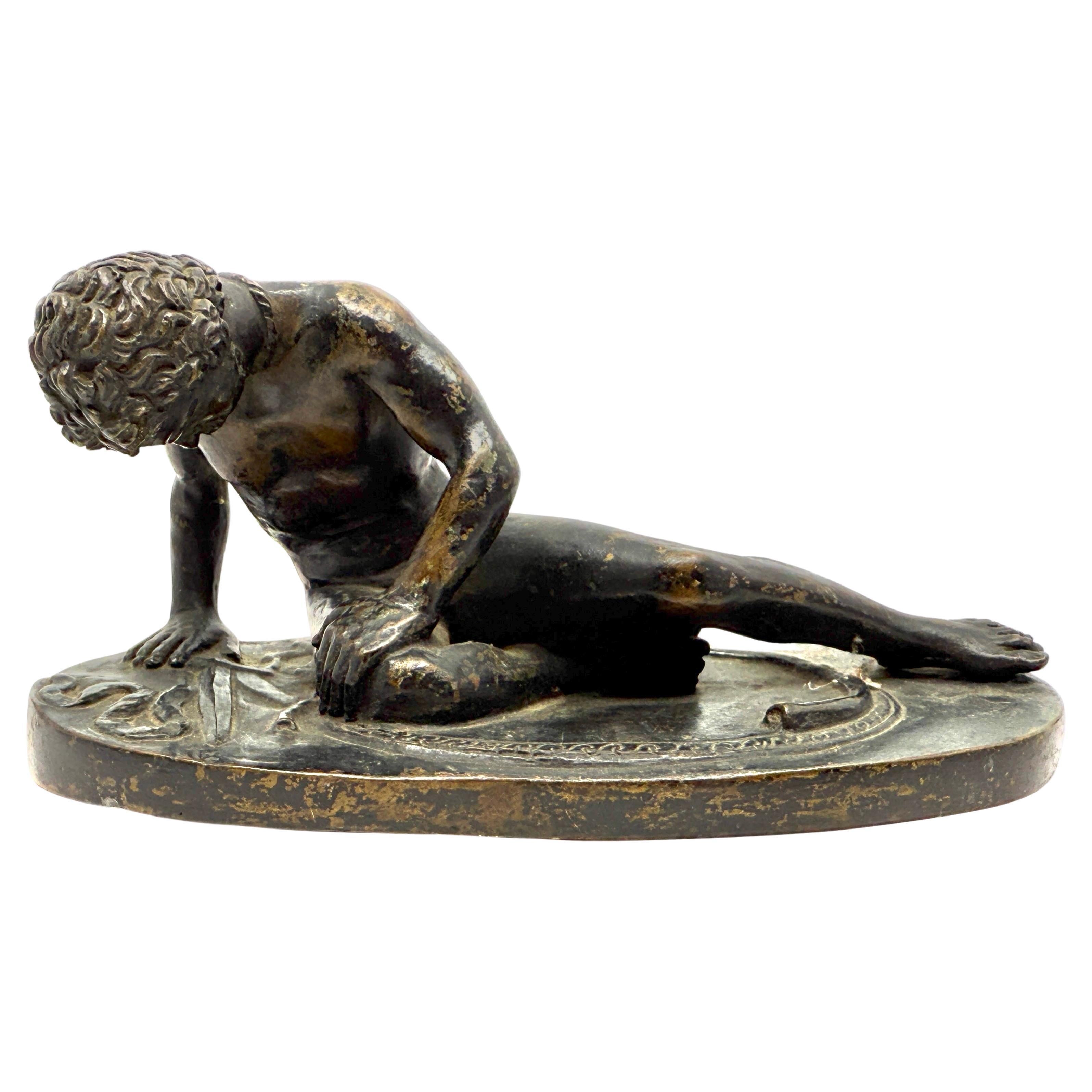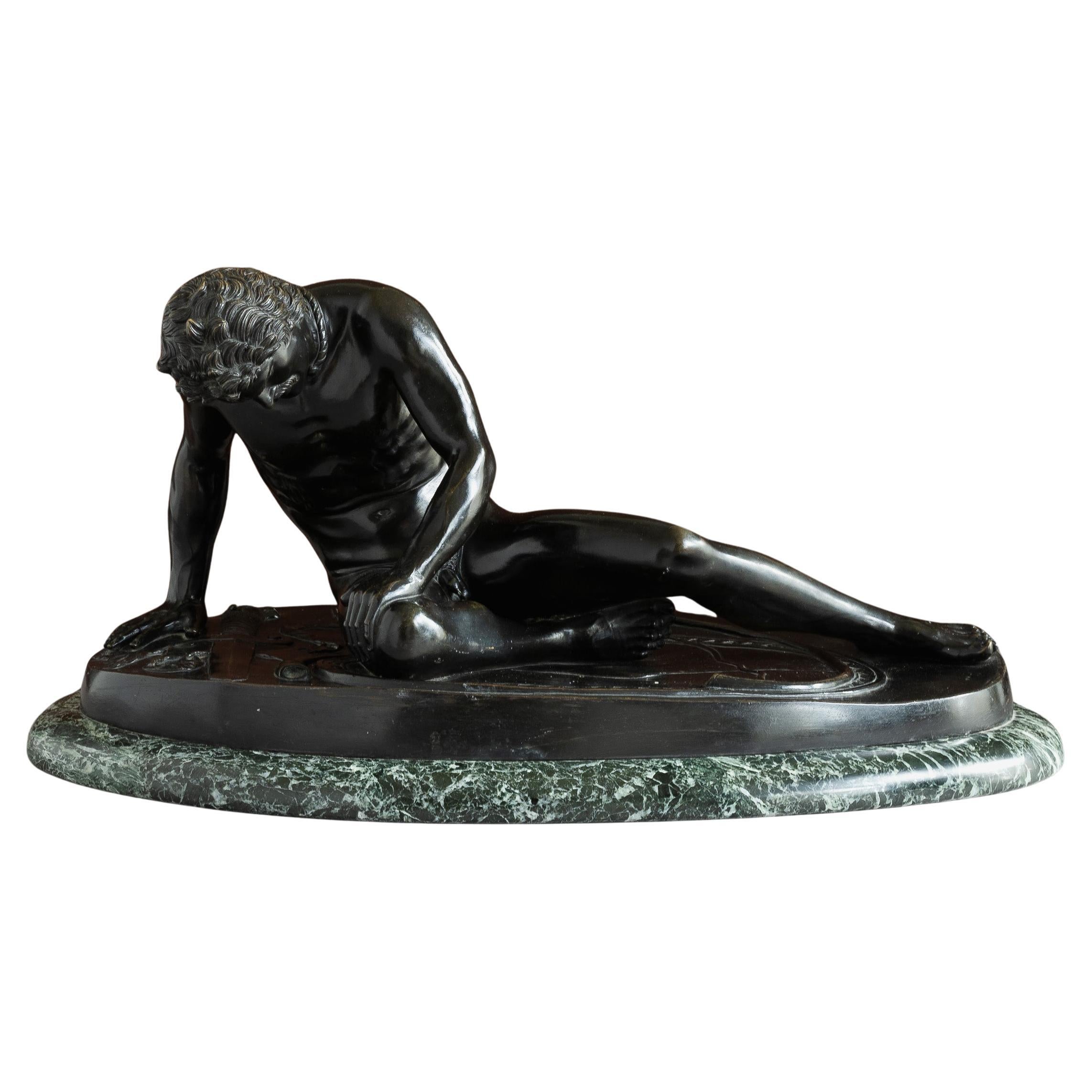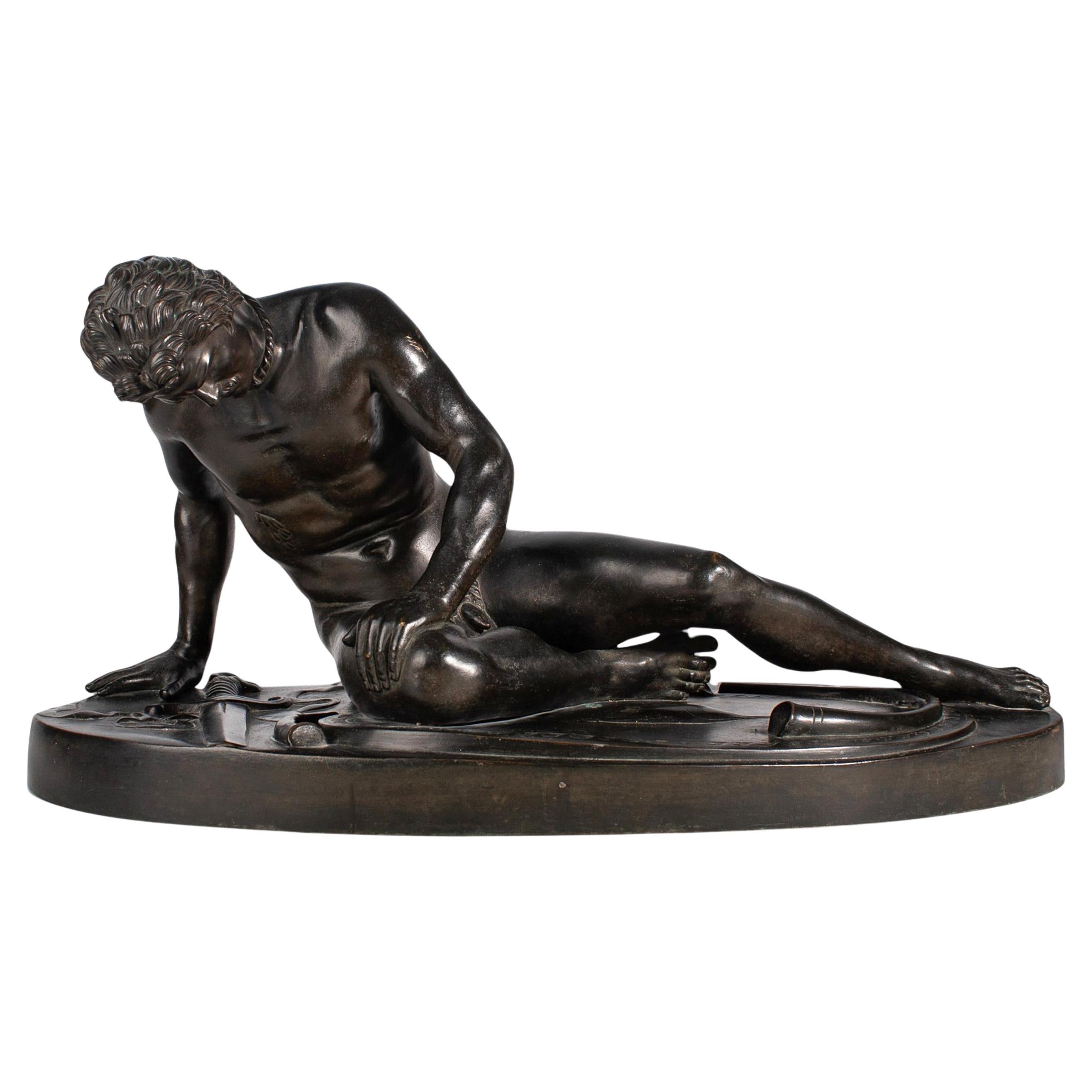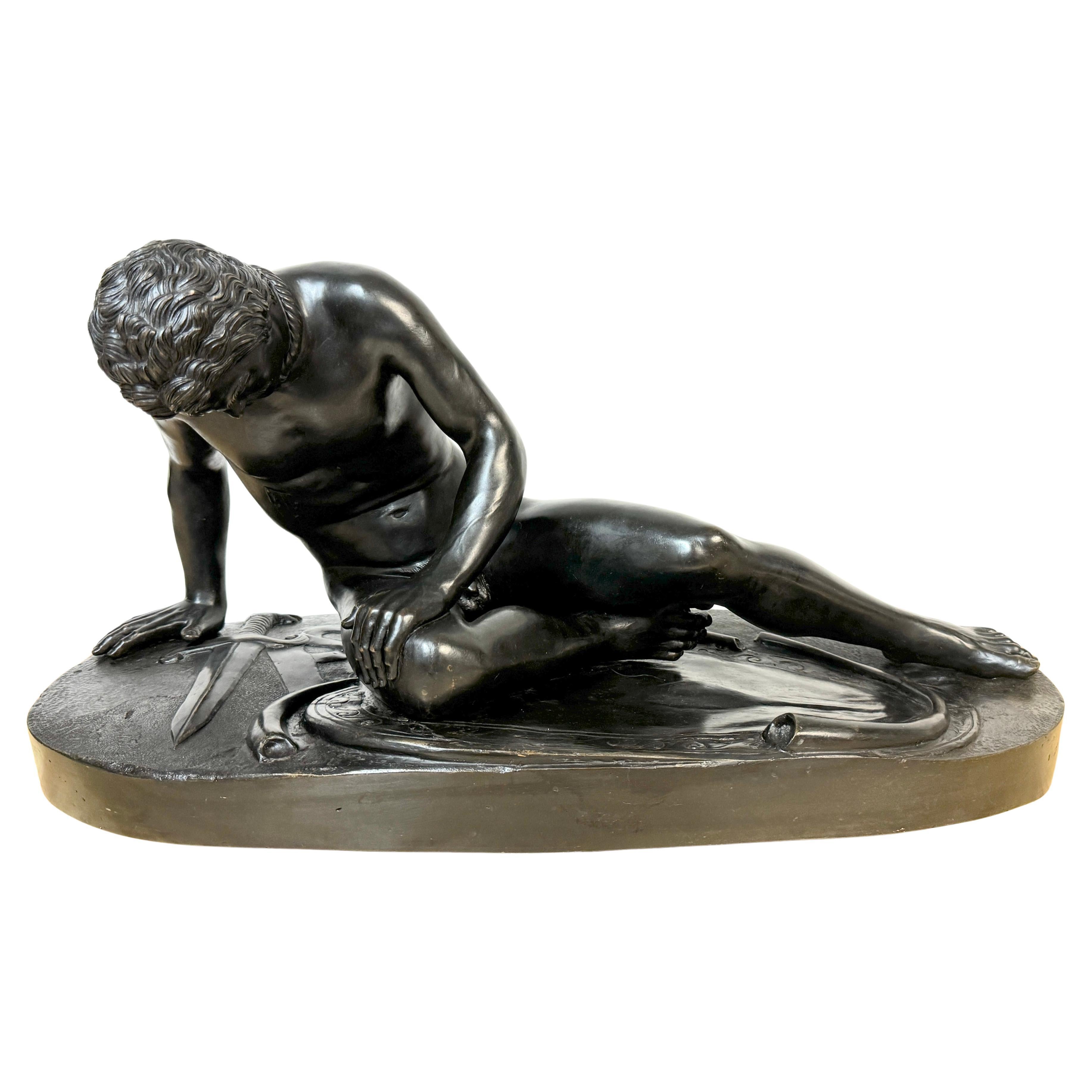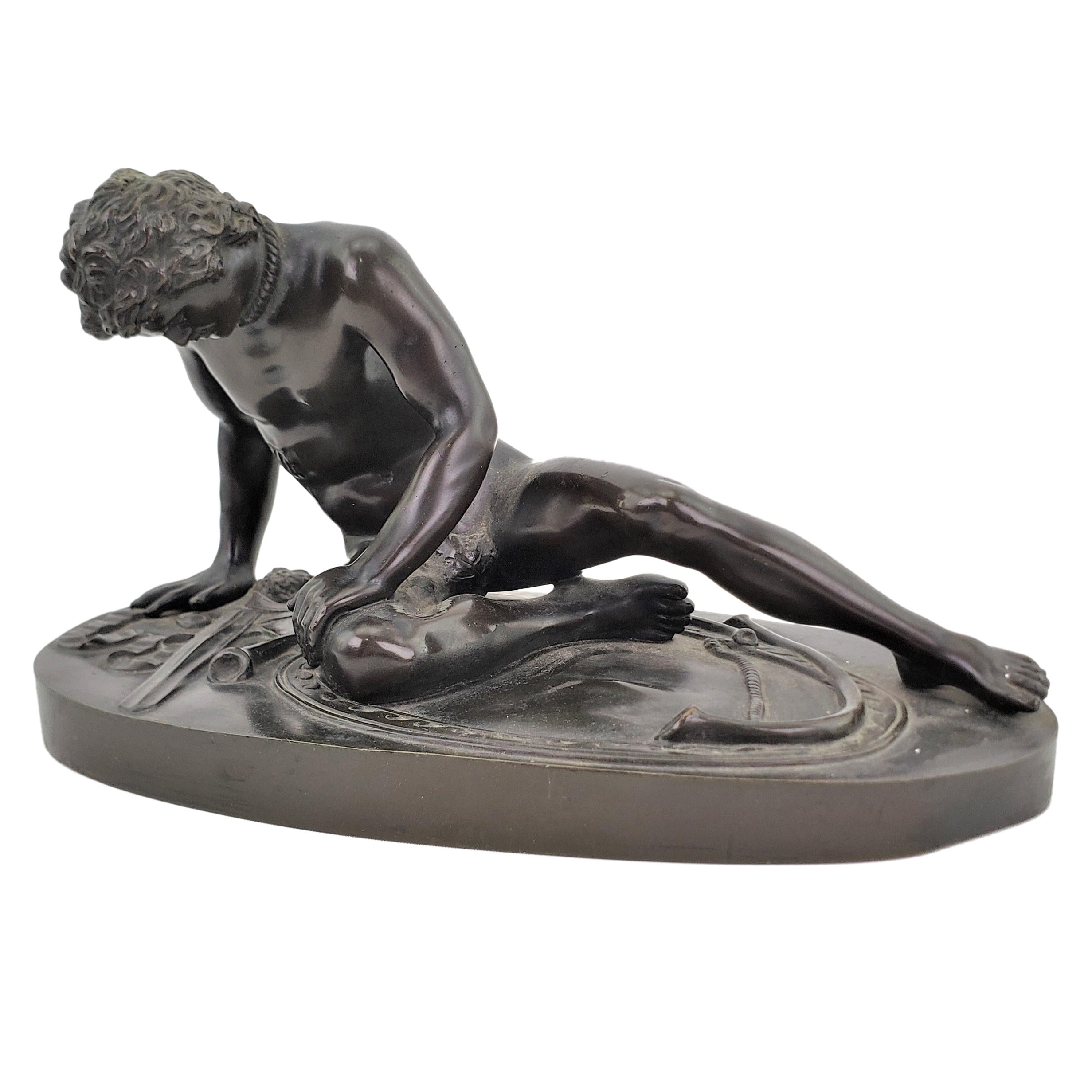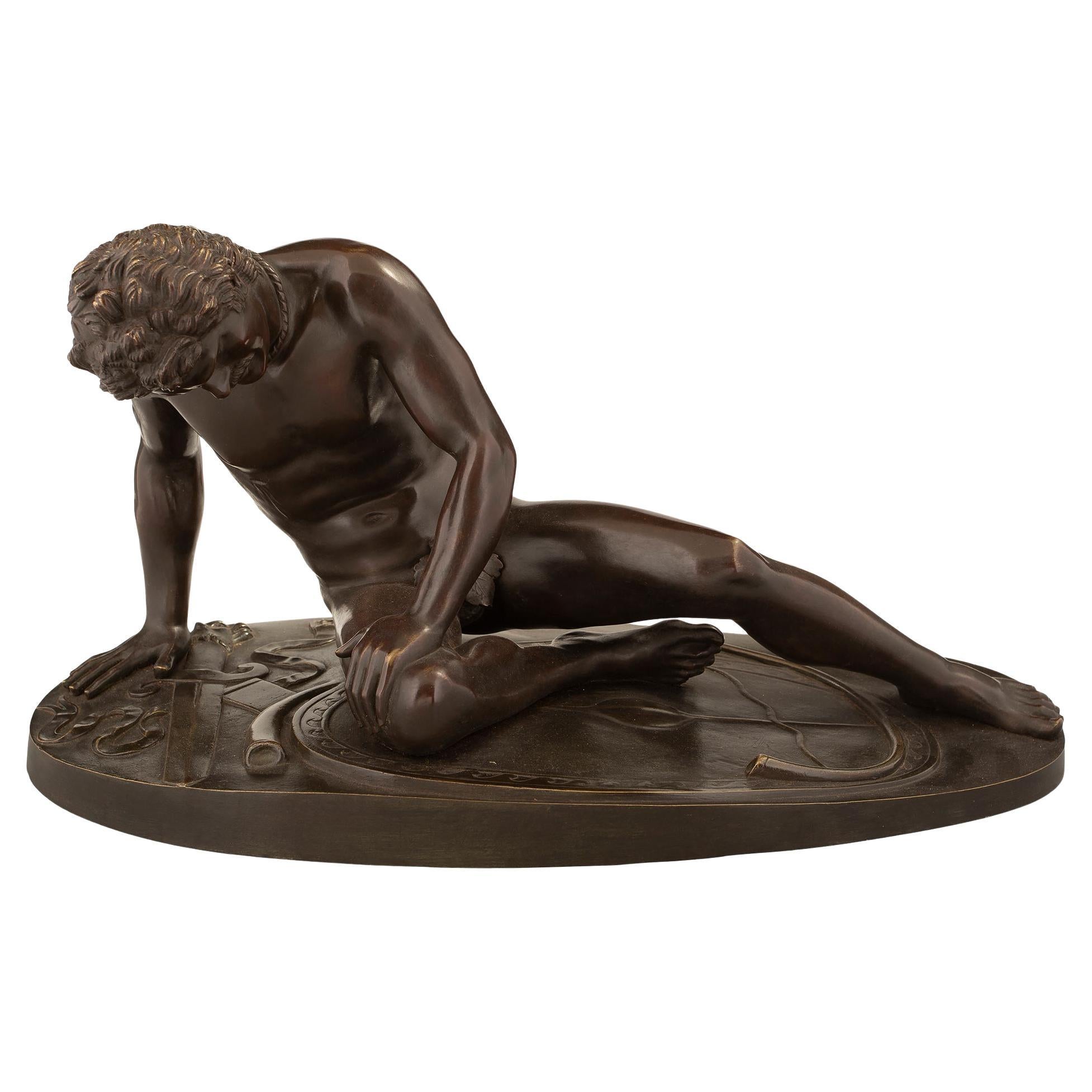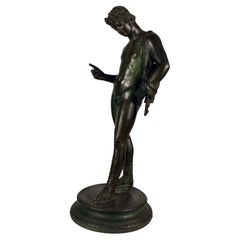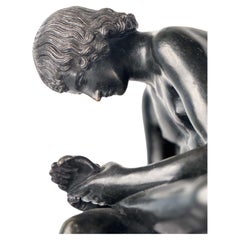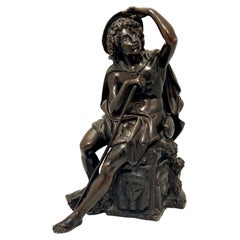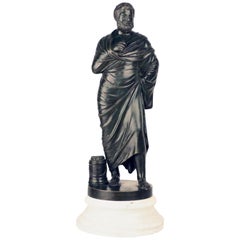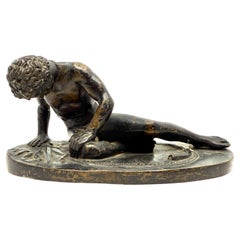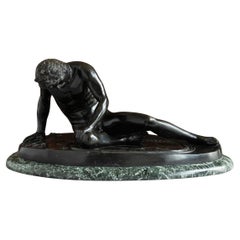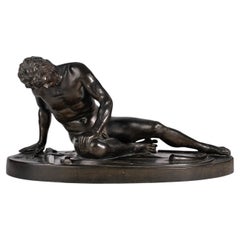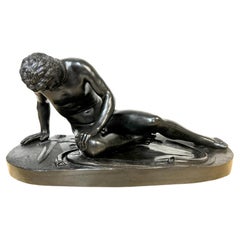Items Similar to Grand Tour bronze figure of “The Dying Gaul”, After The Antique
Video Loading
Want more images or videos?
Request additional images or videos from the seller
1 of 13
Grand Tour bronze figure of “The Dying Gaul”, After The Antique
$1,800
£1,379.83
€1,579.33
CA$2,571.23
A$2,819.84
CHF 1,460.48
MX$33,882.65
NOK 18,390.94
SEK 17,260.42
DKK 11,799.05
About the Item
A late 19th century Grand Tour bronze figure of “The Dying Gaul”, after the antique. The Dying Gaul depicts a warrior in his final moments, next to his shield and sword, his face contorted in pain just before he collapses from the mortal wound to his chest The original marble figure, which is in the Capitoline museum in Rome is thought to be a Roman copy of a Greek sculpture in Bronze. As an image of a vanquished enemy, the sculpture embodies courage in defeat, self-possession in the face of death, and the recognition of nobility in an alien race.
“The Dying Gaul” was found in Rome with another ancient marble sculpture: “The Gaul Committing Suicide with His Wife”. Both were unearthed in the gardens of the Villa Ludovisi, probably during excavations for the villa’s foundations between 1621 and 1623. The Roman copies are of Greek bronze originals created in the third century BC in Asia Minor to commemorate the victory of the king of Pergamon over the invading Gauls. In Pergamon, they most likely adorned the Sanctuary of Athena, who was the protector of the city. The Greek bronzes were evidently brought to Rome, possibly under Emperor Nero (reigned 54 –68 AD), where they reminded Romans of their own proud conquest of Gaul. For both the Romans and the Pergamene Greeks, the subject also held larger significance: the triumph of civilization over barbarism.
- Dimensions:Height: 7 in (17.78 cm)Width: 13 in (33.02 cm)Depth: 6 in (15.24 cm)
- Style:Classical Greek (In the Style Of)
- Materials and Techniques:Bronze,Cast
- Place of Origin:
- Period:
- Date of Manufacture:1880
- Condition:Wear consistent with age and use.
- Seller Location:Montreal, CA
- Reference Number:Seller: D33071stDibs: LU875341681672
About the Seller
4.8
Gold Seller
Premium sellers maintaining a 4.3+ rating and 24-hour response times
Established in 1985
1stDibs seller since 2009
225 sales on 1stDibs
Typical response time: 15 hours
- ShippingRetrieving quote...Shipping from: Montreal, Canada
- Return Policy
Authenticity Guarantee
In the unlikely event there’s an issue with an item’s authenticity, contact us within 1 year for a full refund. DetailsMoney-Back Guarantee
If your item is not as described, is damaged in transit, or does not arrive, contact us within 7 days for a full refund. Details24-Hour Cancellation
You have a 24-hour grace period in which to reconsider your purchase, with no questions asked.Vetted Professional Sellers
Our world-class sellers must adhere to strict standards for service and quality, maintaining the integrity of our listings.Price-Match Guarantee
If you find that a seller listed the same item for a lower price elsewhere, we’ll match it.Trusted Global Delivery
Our best-in-class carrier network provides specialized shipping options worldwide, including custom delivery.More From This Seller
View All"Narcissus" Grand Tour Bronze Sculpture After the Antique
Located in Montreal, QC
A late 19th century / early 20th century bronze figure of Narcissus, after the Antique, He wears a wreath in his hair and carries a goat skin wine sack and stands on a circular base....
Category
Antique Late 19th Century Italian Classical Greek Figurative Sculptures
Materials
Bronze
Bronze Sculpture of Spinario or Boy With A Thorn
Located in Montreal, QC
This bronze figure of Spinario also known as Boy with Thorn and Fedele is a classical figure. It is beautifully cast with very fine detailing and dates to the 19th century, circa 187...
Category
Antique Late 19th Century Italian Grand Tour Figurative Sculptures
Materials
Bronze
Theo. Coinchon 1814-1881 "Traveler" Antique Bronze
By Jacques Antoine Theodore Coinchon
Located in Montreal, QC
This Bronze is very attractive, featuring a traveling youth looking into the distance, He has a sun-hat staff and water canteen and sits on a rocky outcr...
Category
Antique Late 19th Century French Belle Époque Figurative Sculptures
Materials
Bronze
After the Antique, Grand Tour Bronze of Aristotle
Located in Montreal, QC
The philosopher in oratorical pose, with an urn of his writings at his feet.
A 19th century casting, good crisp quality on marble base.
Category
Antique 1850s Italian Classical Roman Figurative Sculptures
Materials
Marble, Bronze
Standing Female Nude Bather, Bronze Signed Fullborn
Located in Montreal, QC
This bronze figure of a nude maiden dates from the early 20th century. She crouches slightly as she enters the water, one foot on a rocky outcrop, with stylized waves at her feet. Ac...
Category
Early 20th Century German Classical Greek Figurative Sculptures
Materials
Bronze
Bronze Figure of Cupid, a Goose Under His Arm
Located in Montreal, QC
A figure of a nude, winged boy (Cupid), carrying a goose under his left arm. The source for this sculpture is a two-foot high bronze fountain figure...
Category
Early 20th Century Italian Classical Roman Figurative Sculptures
Materials
Marble, Bronze
You May Also Like
Grand Tour Neoclassical Bronze of “The Dying Gaul”
Located in Palm Springs, CA
A nice little bronze Grand Tour souvenir bronze of the Dying Gaul a famous sculpture of antiquity preserved in Rome. This bronze has nice detail. The patina is worn in some places and it is in estate found condition. We haven’t tried to clean or polish it.
Some patina loss minor nicks and surfaces scratches, please see the detailed photos.
For this interested this from Wikipedia about the original sculpture:
The Dying Gaul, also called The Dying Galatian[2] (Italian: Galata Morente) or The Dying Gladiator, is an ancient Roman marble semi-recumbent statue now in the Capitoline Museums in Rome. It is a copy of a now lost Greek sculpture from the Hellenistic period (323–31 BC) thought to have been made in bronze.[3] The original may have been commissioned at some time between 230 and 220 BC by Attalus I of Pergamon to celebrate his victory over the Galatians, the Celtic or Gaulish people of parts of Anatolia. The original sculptor is believed to have been Epigonus, a court sculptor of the Attalid dynasty of Pergamon.
Until the 20th century, the marble statue was usually known as The Dying Gladiator, on the assumption that it depicted a wounded gladiator in a Roman amphitheatre.[4] However, in the mid-19th century it was re-identified as a Gaul or Galatian and the present name "Dying Gaul" gradually achieved popular acceptance. The identification as a "barbarian" was evidenced for the figure's neck torc, thick hair and moustache, weapons and shield carved on the floor, and a type of Gallic carnyx between his legs.[5]
Description
The white marble statue, which may originally have been painted, depicts a wounded, slumped Gaulish or Galatian Celt, shown with remarkable realism and pathos, particularly as regards the face. A bleeding sword puncture is visible in his lower right chest. The warrior is represented with characteristic Celtic hairstyle and moustache with a Celtic torc...
Category
Early 20th Century Italian Figurative Sculptures
Materials
Bronze
Antique Bronze Figure of The Dying Gaul
Located in London, GB
A bronze figure of the dying Gaul after the Antique, on verde marble base, Italian, nineteenth century.
Dimensions: 30.5cm (12") High, 35cm (13¾") Wide, 65cm (25½") Long, 13.5cm (5¼...
Category
Antique 19th Century Italian Classical Greek Figurative Sculptures
Materials
Marble, Bronze
Mid-19th Century Grand Tour Bronze Figurative Sculpture 'The Dying Gaul', Italy
Located in North Miami, FL
Mid-19th Century Grand Tour Bronze Figurative Sculpture 'The Dying Gaul', Italy
By: unknown
Material: bronze, copper, metal
Technique: cast, molded, polished, metalwork, patinated
D...
Category
Antique 1850s Italian Grand Tour Figurative Sculptures
Materials
Metal, Bronze, Copper
Large Italian Grand Tour Bronze Sculpture "Dying Galata" /Dying Gaul, C. 1875
Located in West Palm Beach, FL
Large Italian Grand Tour Bronze Sculpture "Dying Galata"/Dying Gaul, C. 1875, Attributed to Naples Foundry
A remarkable large Italian Grand Tour bronze sculpture titled "Dying Galata" or "Dying Gaul," dating circa 1875 and attributed to the renowned Naples Foundry. This exquisite piece, an expertly cast bronze, retains its original black-brown patina and boasts a substantial size, standing 12 inches high, 26.5 inches wide, and 13.5 inches deep. It is a distinguished example of the iconic Grand Tour sculptures, which were popular souvenirs for affluent travelers during the 19th century.
The sculpture is a faithful rendition of the ancient Roman marble statue "The Dying Gaul," also known as "The Dying Galatian" or "The Dying Gladiator." The original marble, now housed in the Capitoline Museums in Rome, is a Roman copy of a lost Greek bronze sculpture...
Category
Antique 19th Century Italian Grand Tour Figurative Sculptures
Materials
Bronze
Antique Grand Tour Ornately Cast 'The Dying Gaul' Italian Bronze Sculpture
Located in Hamilton, Ontario
This very ornately cast bronze sculpture is unsigned, but presumed to have been done in Italy in approximately 1900, in the Classical Roman style. This figurative study depicts the famous Classical Roman sculpture known as 'The Dying Gaul...
Category
Early 20th Century Italian Classical Roman Figurative Sculptures
Materials
Bronze
Italian 19th Century Patinated Statue of ‘The Dying Gaul’
Located in West Palm Beach, FL
A handsome Italian 19th century patinated statue of 'The Dying Gaul'. The statue is raised by an oval shaped terrain like designed base. The fallen gladiato...
Category
Antique 19th Century Italian Figurative Sculptures
Materials
Bronze
